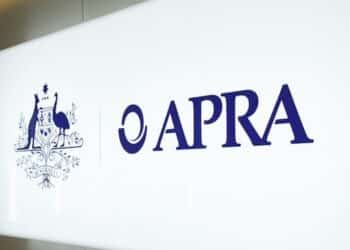Liberal senator Andrew Bragg asked some tough questions of the Labor government at Thursday’s Senate estimates.
Questioning Treasury officials over the 150 per cent increase in ASIC levies charged to advisers, Mr Bragg sought clarity on how Labor’s support for the levy increase aligns with its commitment to reduce the cost of advice.
However, Mr Bragg’s question was met with a tense silence, the palpable tension evident even through the virtual setting.
Eventually, Treasury official Brenton Philp said: “Senator, they are two different things.”
“One of them is a self-funded industry levy, because ASIC has a cost recovery mechanism. The other is about the Quality of Advice Review and the fees that are charged for that advice to consumers and a mechanism which enables those fees to be lessened.”
Mr Bragg then asked: “Isn’t the government levy an input cost for those businesses that are providing financial advice?”
To this, Mr Philp replied: “Yes.”
However, he stopped short of acknowledging that this heightened “input cost” would probably result in an escalation of the cost of advice due to advisers needing to generate more revenue to cover their increased business expenses.
Mr Bragg also asked some tough questions concerning the extent of the ASIC levy increase. But Treasury official Khanh Hoang partly diverted these by explaining to Mr Bragg how the levy system works.
“The relief that was provided during the pandemic was always intended to be temporary. And during the period of the levy relief, there was a major shortfall in funding due to the temporary relief that was applied. The shortfall was estimated to be $46 million, and therefore the levy just reflects the costs collected to then enforce and regulate that sector,” Ms Hoang said.
When the government announced that the freeze instituted by former treasurer Josh Frydenberg on the ASIC Supervisory Cost Recovery Levy would be lifted, it was clear there would be a jump in the amount advisers were required to pay.
The size of that increase was not expected, however, with the corporate regulator’s draft Cost Recovery Implementation Statement (CRIS) showing that the cost of regulating licensees that provide personal advice to retail clients was $55.5 million in 2022–23. This moved the levy from the frozen level of $1,142 per adviser to $3,217 per adviser, while the cost to licensees remained at the flat $1,500 fee.
ASIC then revised its overall cost statement reducing the amount required to regulate the sector by nearly $8 million to $47.6 million, with a subsequent $400 reduction for individual advisers. However, this new $2,818 has not been met with exuberance from the profession.




Public Servants providing frank and fearless advice – seems lost to agendas plaguing Public Servants?
Wish he also asked of the breakdown in where teh money was spent as well as how this was offset by any fines or judgements made in their favour.
Let’s see the video of the “tense silence, the palpable tension evident” from Treasury.
Canberra, Pollies, Govt, Regulators, etc now ALL say – Let’s Make Advice More Affordable.
Yet everything Canberra, Pollies, Govt, Regulators INCREASES ADVICE COSTS !!!!!!!!!!!
It’s like a weird Monty Python skit but unfortunately it’s real.